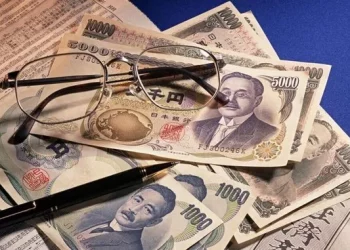The Russian ruble (RUB) is a currency with a rich history and a complex present. Its value has fluctuated dramatically over the years, influenced by factors such as oil prices, geopolitical events, and economic policies. This article will explore the factors that determine the ruble’s value, its historical performance, and the challenges it faces today. By the end, you’ll have a clear understanding of what makes the ruble rise and fall.
The Basics of the Ruble
What is the Ruble?
The ruble is the official currency of Russia. It is divided into 100 kopecks, though kopecks are rarely used today due to their low value. The ruble is issued by the Central Bank of Russia, which also sets monetary policy to control inflation and stabilize the currency.
How is the Ruble’s Value Determined?
Like most modern currencies, the ruble’s value is determined by supply and demand in the foreign exchange market. Factors such as interest rates, inflation, and economic stability play a significant role in influencing its value.
Historical Performance of the Ruble
The Early Years: The ruble has been around since the 13th century, but its value has not always been stable. In the early days, it was a silver coin used for trade. Over time, it evolved into a paper currency, but its value often fluctuated due to wars and economic crises.
The Soviet Era: During the Soviet Union, the ruble was tightly controlled by the government. Its value was artificially set, and it was not freely traded on international markets. This made the ruble more of a domestic currency than a global one.
Post-Soviet Challenges: After the Soviet Union collapsed in 1991, the ruble faced significant challenges. Hyperinflation eroded its value, and the currency became almost worthless. In 1998, Russia introduced a new ruble to stabilize the economy, but the currency remained volatile.
Factors Influencing the Ruble’s Value
Oil Prices: Russia is one of the world’s largest oil exporters, and oil revenues play a crucial role in its economy. When oil prices are high, the ruble tends to strengthen because Russia earns more from exports. Conversely, when oil prices fall, the ruble often weakens.
Geopolitical Events: Geopolitical tensions, such as the annexation of Crimea in 2014, have a significant impact on the ruble’s value. Sanctions imposed by Western countries have led to capital flight and a weaker ruble. Any escalation in tensions can cause the currency to lose value rapidly.
Monetary Policy: The Central Bank of Russia plays a key role in determining the ruble’s value. By adjusting interest rates and managing foreign exchange reserves, the bank can influence the currency’s strength. For example, raising interest rates can attract foreign investment, boosting the ruble’s value.
Recent Trends in the Ruble’s Value
The 2022 Crisis: In 2022, the ruble experienced a sharp decline due to the invasion of Ukraine and subsequent sanctions. At one point, the exchange rate reached 120 rubles to the dollar, a historic low. However, the Central Bank of Russia took swift action, raising interest rates and imposing capital controls to stabilize the currency.
Recovery in 2023: By 2023, the ruble had recovered significantly, thanks to higher oil prices and effective monetary policy. The currency became one of the best-performing in emerging markets, with the exchange rate stabilizing around 80 rubles to the dollar.
Challenges Facing the Ruble
Economic Dependence on Oil: One of the biggest challenges for the ruble is Russia’s heavy reliance on oil exports. This makes the currency highly sensitive to fluctuations in oil prices. Diversifying the economy could help reduce this vulnerability.
Inflation: Inflation remains a persistent issue in Russia. High inflation erodes the ruble’s value and reduces purchasing power. The Central Bank of Russia has made progress in controlling inflation, but it remains a significant challenge.
Geopolitical Risks: Ongoing tensions with the West, particularly over Ukraine, continue to pose risks to the ruble. Any escalation in sanctions or conflicts could lead to a rapid decline in the currency’s value.
The Future of the Ruble
Short-Term Outlook: In the short term, the ruble’s value will likely depend on oil prices and geopolitical developments. If oil prices remain high and tensions ease, the ruble could continue to strengthen. However, any negative developments could lead to a decline.
Long-Term Prospects: For the ruble to achieve long-term stability, Russia needs to address its economic challenges. Diversifying the economy, controlling inflation, and reducing geopolitical risks are crucial steps. Additionally, improving the business environment and attracting foreign investment could help strengthen the currency.
Conclusion
The value of the Russian ruble is influenced by a complex interplay of factors, including oil prices, geopolitical events, and monetary policy. While the currency has shown resilience in the face of challenges, it remains vulnerable to external shocks. Understanding the ruble’s value requires a deep dive into Russia’s economy and its place in the global market. As Russia continues to navigate these challenges, the ruble’s future will depend on the country’s ability to adapt and evolve in an ever-changing world.
Related Topics:



























